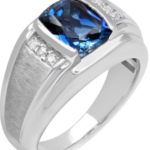JPG vs PNG Image Formats
Introduction
In the intricate tapestry of digital imagery, selecting the appropriate file format can profoundly influence the quality, compatibility, and versatility of images.
Among the myriad options available, two prominent formats, JPG (or JPEG) and PNG, stand out for their unique characteristics and functionalities. Understanding the nuances that set these formats apart is essential for making informed decisions in image selection and utilization.
This article endeavors to delve into the intricacies of JPG and PNG formats, shedding light on their distinctive traits, critical disparities, and optimal applications.
What are the JPG?
JPG, an acronym for Joint Photographic Experts Group, reigns as one of the most widely used image formats renowned for its versatility, efficiency in compression, and broad compatibility.
It serves as the go-to format for storing photographs, digital art, and web graphics, owing to its adeptness at preserving high image quality while minimizing file size.
By employing lossy compression techniques, JPG to PNG discards certain image data to achieve compression, resulting in smaller files conducive to swift web loading and efficient storage.
What are the PNG?
PNG, short for Portable Network Graphics, emerges as a flexible image format revered for its lossless compression attributes and support for transparency. Unlike JPG, PNG retains all image data without compromising quality, making it the preferred choice for graphics necessitating precise details and transparency effects.
PNG finds favor in diverse applications, from logos and icons to illustrations and images requiring text overlays. Its ability to maintain fidelity and transparency renders it indispensable for projects demanding uncompromised visual integrity.
Differences Between JPG and PNG
- Compression Method:
- JPG employs lossy compression, sacrificing certain image data to reduce file size. While this results in smaller files, it may entail a slight compromise in image quality, especially in areas with intricate details or gradients.
- PNG, on the other hand, utilizes lossless compression, retaining all image data without compromise. This ensures pristine image quality, making PNG ideal for graphics demanding precision and fidelity.
- Transparency Support:
- PNG boasts alpha channel transparency, allowing for the creation of images with transparent backgrounds. This feature is invaluable for web graphics, logos, and icons necessitating seamless integration with diverse backgrounds.
- JPG lacks support for transparency, as it does not include an alpha channel. Consequently, JPG images feature solid background colors, which may prove unsuitable for applications requiring transparency effects.
- Color Depth:
- PNG supports a broad spectrum of color depths, encompassing grayscale, indexed color, and truecolor with alpha transparency. This versatility facilitates accurate color representation and preservation of image quality.
- JPG typically adheres to truecolor with 24-bit color depth, suitable for most photographs and web graphics. However, it may prove inadequate for images characterized by intricate details or areas of solid color.
- File Size:
- Due to its lossy compression, JPG images tend to boast smaller file sizes relative to PNG images of comparable dimensions and quality. This renders JPG preferable for web applications, where expeditious loading times and diminished bandwidth consumption are paramount.
- PNG images, benefiting from lossless compression, often feature larger file sizes compared to JPG counterparts of analogous quality. While this may impact loading times, the preservation of image integrity and transparency may supersede size considerations in certain contexts.
Choosing Between JPG and PNG
The selection between JPG and PNG hinges upon the specific requisites of your project:
- Utilize JPG for:
- Photographs and images boasting intricate color gradients.
- Web graphics, social media posts, and online content necessitating expedited loading times and diminished bandwidth utilization.
- Contexts accommodating solid background colors where transparency remains superfluous.
- Opt for PNG for:
- Logos, icons, and graphics necessitating transparent backgrounds.
- Images featuring text overlays or intricate details warranting precise rendering.
- Situations prioritizing image quality and transparency, even at the expense of augmented file sizes.
Conclusion
In the realm of digital imagery, the choice between JPG and PNG image formats plays a pivotal role in determining the quality, efficiency, and functionality of images. While JPG to PNG online embodies efficiency and compactness suitable for web usage,
PNG embodies fidelity and transparency indispensable for precision-driven graphics. By meticulously evaluating the requirements of your project, you can select the most appropriate image format to fulfill your envisioned aesthetic and functional objectives.
FAQs
- Can I convert a JPG image to PNG format?
- Yes, numerous online tools and software applications facilitate seamless conversion of JPG images to PNG format, preserving image quality and transparency.
- Which image format is superior for printing purposes?
- PNG typically reigns supreme for printing endeavors, owing to its lossless compression and support for high-quality images with transparency. Nevertheless, JPG may suffice contingent upon specific printing prerequisites and preferences.
- Do alternative image formats exist besides JPG and PNG?
- Indeed, several other image formats abound, including GIF (Graphics Interchange Format), TIFF

